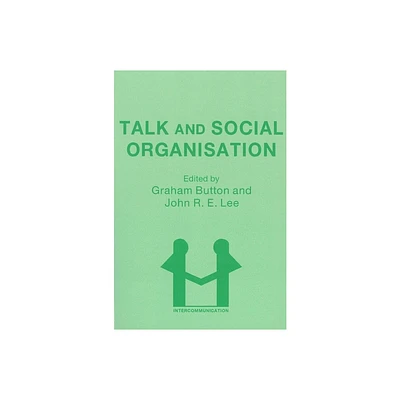Home
Talk and Social Organisation
Loading Inventory...
Barnes and Noble
Talk and Social Organisation
Current price: $34.95


Barnes and Noble
Talk and Social Organisation
Current price: $34.95
Loading Inventory...
Size: OS
*Product Information may vary - to confirm product availability, pricing, and additional information please contact Barnes and Noble
This volume contains a collection of original studies in conversation analysis (C.A.) arranged and presented both to introduce the discipline to the newcomer and to reveal some of the expanding range of discoveries which conversation analysts are making in the course of their distinctive enquiries into the order and organisation of natural language. Though sociological in its orientation. C.A. and the papers here represented are of direct methodological and substantive interest to linguists, philosophers, discourse and speech analysts and social anthropologists. Indeed the strict adherence to the methodological principle that analysis can and must be shown to be grounded in data represents a challenge to all those disciplines which set out to use their materials as mere hand-maidens to support preconstructed models, theories and hypotheses. In this series of papers which includes previously unpublished works of the late Harvey Sacks and the last completed joint researches of Sacks, Jefferson and Schegloff ordinary talk is shown as consisting of a variety of previously unnoticed socially organised practices which conversationalists engage in to generate the organisation which talk has. The methods and the analytic mentality of conversation analysts are, and are here shown to be, designed to make conversationalist's methods, structure and modes of orientation available for empirical study. The search for order and organisation reveals it everywhere. Laughter is shown to be concertedly organised and negotiated in the finest detail. The machinery of delicate repair systems is revealed. Conversational completions are shown to be the product of elaborate negotiating machineries. Conversationalists are revealed as subtly orienting-to and invoking the visual contexts of their interaction within the framework of the turn-taking organisation of conversation. This volume also contains examples of conversation analytic work into the talk produced in organisational settings such as courts and Doctor/Patient interviews. Such analyses reveal the contribution that the discipline might make towards the exploration of the kind of social phenomena traditionally researched by sociologists, social psychologists and social anthropologists.


















